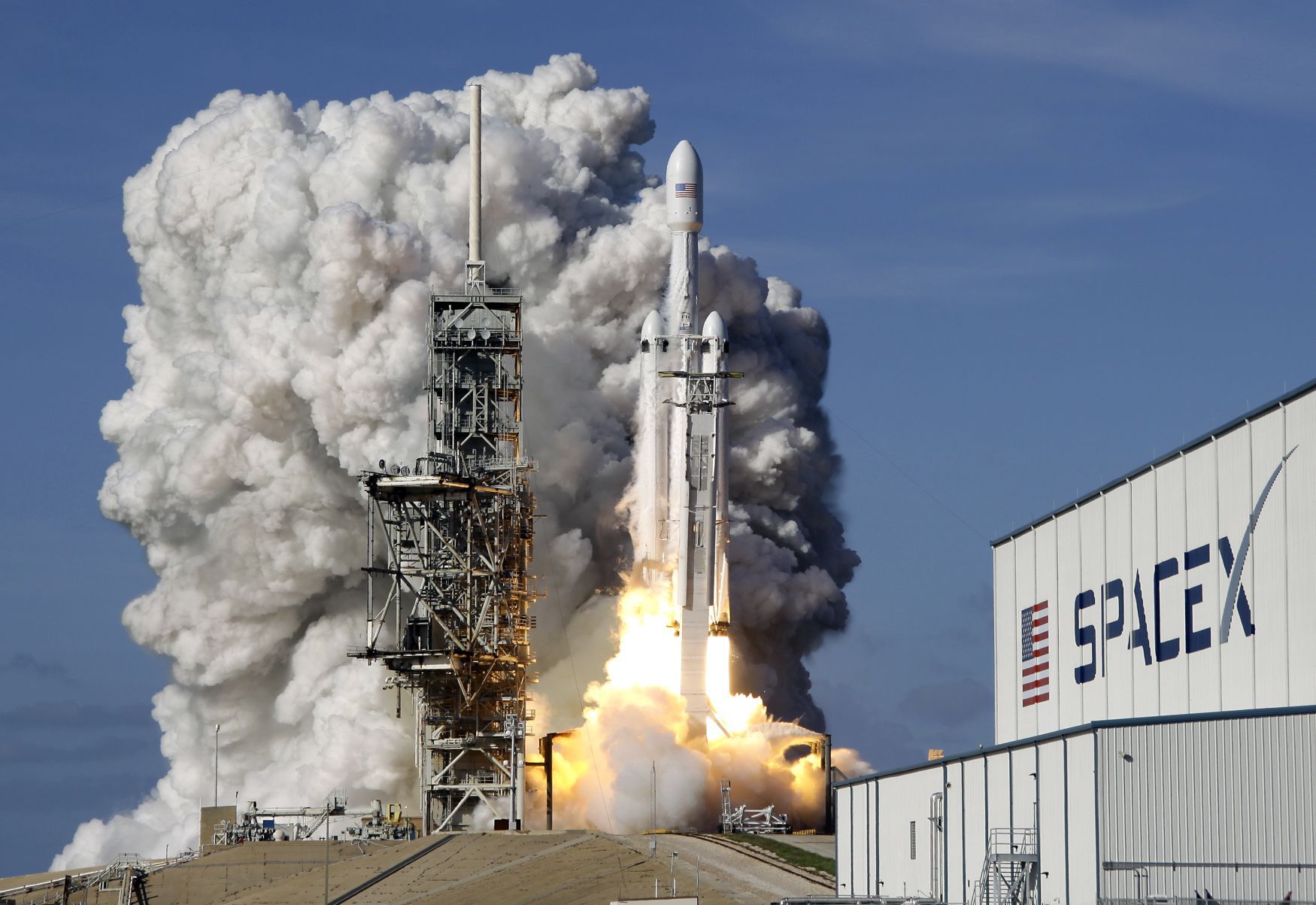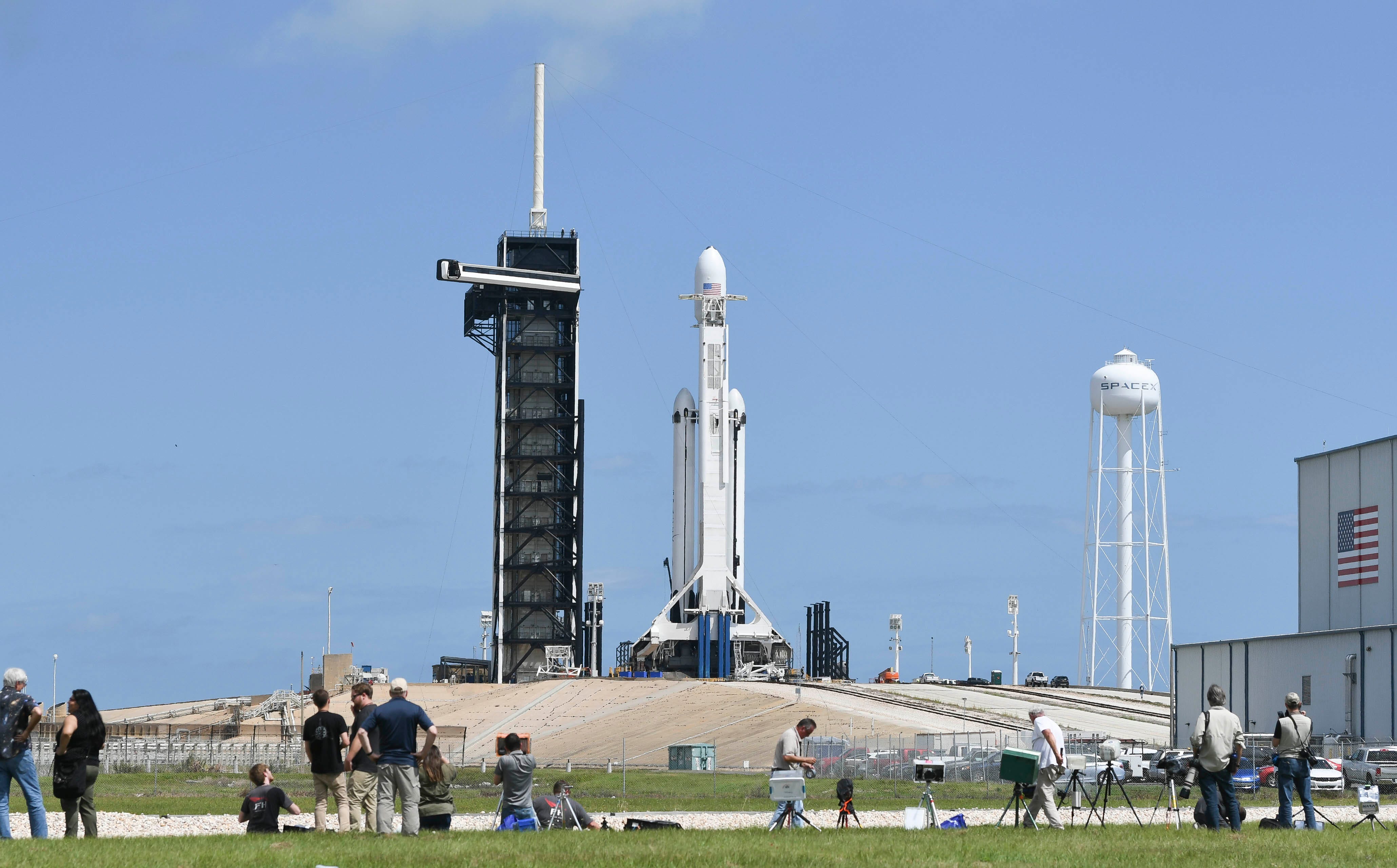

Though the Roadster is headed out toward Mars, its trajectory is such that it has no chance of colliding with the Red Planet. No details were given about the Roadster itself, but it's likely that it was modified to make it suitable for space travel by removing the lithium ion battery banks or replacing them with dummies. However, in a nod to The Hitchhiker's Guide to the Galaxy, the words "Don't Panic" were displayed on the dashboard screen in large, friendly letters. In addition, Bowie's hit "Space Oddity" was playing on the car's soundtrack, though in the vacuum of space, there won't be anyone to hear it. In the driver's seat of the Roadster is a mannequin, named "Starman" after the 1972 David Bowie song, who is dressed in one of the spacesuits that will be worn by the passengers and crew on SpaceX's manned dragon missions. This marks either the first time that a motor car was sent into space or the fourth, if you count the three Lunar Rovers carried on the last three Apollo lunar landing missions in the early 1970s. In such a situation, it's usual to swap out the satellite with ballast made of blocks of steel or concrete, but in a whimsical move, the company used SpaceX CEO and Lead Designer Elon Musk's midnight-cherry Tesla Roadster. Once the orbital maneuver was executed, it marked a first for SpaceX as its unique payload separated and was set on an elliptical interplanetary trajectory around the Sun that will send it as far as the orbit of Mars.īecause the Falcon Heavy was only given a 50/50 chance of success, SpaceX decided not to risk a functioning spacecraft. The second stage then fired for five minutes and 16 seconds, followed by a second burn for 30 seconds. The latter shutdown at the three minute and four second mark, then the second stage separated three seconds after. 4 His photograph of the Falcon Heavy’s three.

3 Once he retrieved his cameras, he saw that he’d come away with a set of incredible photographs. 2 After setting up remote-sensor cameras on the launch pad, Kenniston viewed the take off from 6 miles away. Falcon 1 could place a 1,010-kg (2,227-pound) payload into orbit at lower cost than other launch vehicles. corporation SpaceX with funding from South African-born American entrepreneur Elon Musk. Two minutes and 29 seconds into the flight, the two outboard boosters shut down and then separated from the central core four seconds later. 1 Photographer Brady Kenniston attended SpaceX’s Falcon Heavy launch in Cape Canaveral. Falcon, privately developed family of three launch vehicles Falcon 1, Falcon 9, and Falcon Heavy built by the U.S. During liftoff, the 27 Merlin 1D engines of the Falcon Heavy's three Falcon 9 core boosters generated 5,548,500 lb of thrust as they gulped down supercooled liquid oxygen and kerosene. Today's launch came after a two-hour and 15 minute delay due to high-altitude shear winds that were outside the rocket's safety parameters. SpaceX Falcon Heavy rocket will take to the skies for the third time to launch the US Department of Defenses Space Test Program-2 (STP-2) mission in late June. At 3:45 pm EST, the world's most powerful operational booster lifted off from Launch Complex 39A (LC-39A) at NASA's Kennedy Space Center, Florida on a demonstration mission intended to gather information about the reusable launch system before it goes into service. Even at the low end of large geostationary satellites, Jupiter 3 was likely to have a launch mass of well over 8 tons.Commercial space travel took a quantum leap forward today as SpaceX's Falcon Heavy rocket made its maiden flight. In more normal cases, large geostationary satellites tend to launch with an extra 50-80% of their dry mass in fuel, not ~130%. A SpaceX Falcon Heavy launch vehicle at NASA's Kennedy Space Center. Telstar 19V, for example, had a reported dry mass of just over 3 tons (~6700 lb), meaning that more than half its wet mass was fuel for orbit-raising and maneuvers. However, in hindsight, Jupiter 3’s 5.8-ton dry mass should have already made it clear that that was unlikely. While the launch was successful, the transfer to launch Telstar 19V needed the satellite to do More than rising to orbit. The Telesat’s 7076 kilograms Telstar 19V was delivered by launching into geostationary transfer orbit (GTO). In 2018 July there was a record-breaking launch by sending the heaviest commercial geostationary satellite on Flacon 9. In the documents that were revealed initially, it was stated that the satellite would weigh around 5817 kilograms. With a mass of 9,200 kg, as per F9 never made much sense. Thanks to for confirming that massive Jupiter-3 satellite will indeed be launching on #SpaceX Falcon Heavy, not Falcon 9 as previously reported.


 0 kommentar(er)
0 kommentar(er)
